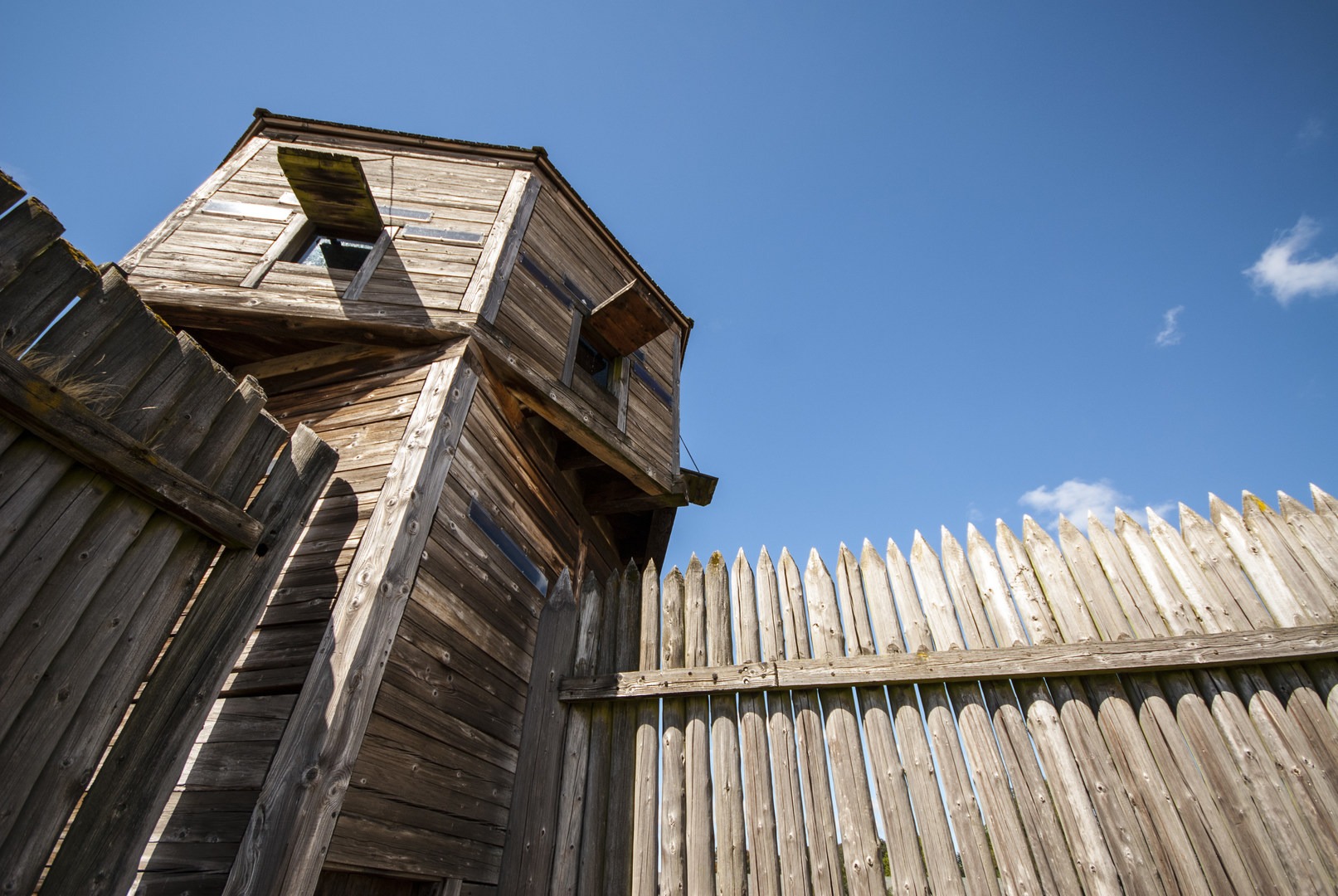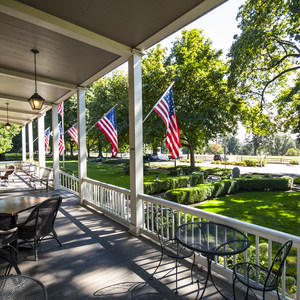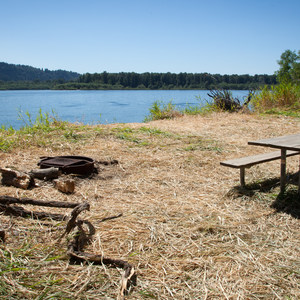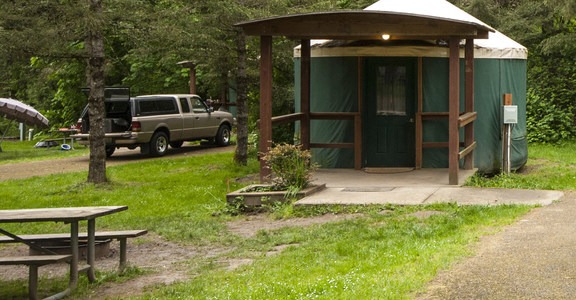First established in 1824, Fort Vancouver was a critical outpost for the Hudson's Bay Company, which represented British interests in what was known as the Columbia District. The fort functioned as a distribution hub for furs and other goods collected from the region and destined for worldwide circulation, from the East Coast to Europe and China. The original fort was a large and elaborate settlement for its time, and housed behind the massive 20-foot-high walls there was a very self-sufficient village.
For decades Fort Vancouver was more than just a successful trading post: it was the center of a sphere of economic and cultural influence that included what is now the entire U.S. West Coast, Hawaii, and Alaska. The establishment of a north-to-south triad of Fort Langley in British Columbia, Fort Nisqually on Puget Sound, and Fort Vancouver on the Columbia River enabled the Hudson's Bay Company to completely dominate trapping and trade in the Northwest for the first half of the 19th century. Yet this powerful British outpost was ultimately to find itself surrounded by the gradual and persistent trend of American settlement. The Oregon Trail brought more and more settlers each year, and over time the area gained a de facto identity as an Oregon Territory.
Much of this settlement was facilitated and encouraged by the first Chief Factor of the fort, John McLoughlin, who earned the reputation as a "Father of Oregon" for just such efforts. Policy in the latter days of British occupation at Fort Vancouver was conflicted: While the official efforts of the Hudson's Bay Company discouraged these settlers, there was also a significant business opportunity in supplying this new population that was looking to establish homesteads; the Chief Factor of the company's principal outpost was an outspoken advocate of American settlement to the region; finally, the British efforts to encourage migration from its own citizens to the area met with middling success.
By 1846 when the Oregon Treaty firmly established the American border at the 49th parallel, Britain and the Hudson's Bay Company had largely come to terms with the fort's transfer into American ownership. Unlike Fort Nisqually, which was also within the new Oregon Territory and which fell into disuse by 1869, the U.S. Army saw great strategic significance to Fort Vancouver. The Army expanded its presence around the fort with the establishment Columbia Barracks in 1849, and by 1860 when the Hudson's Bay Company left the fort for good, the site was a vital part of the new territory's administration. The Army's commitment to the post during this period can be seen as you walk through the rest of Vancouver National Historical Refuge + Officer's Row National Historic District.
The fort itself was used as a resource during the Civil War, but a large fire in 1866 destroyed many of the structures. Today, much of the fort has been rebuilt to exacting detail. You'll see versions of quotidian establishments like the blacksmith shop, the doctor's office, and the carpenter's shop in addition to more specialized structures like the Chief Factor's House and the Counting House, and the mighty bastion that guarded the fort. The grounds make for a fascinating tour, so be sure to carve out enough time to enjoy the details.
Fort Vancouver is open 360 days a year (it is closed November 27, December 24, 25, and 31, and January 1); winter hours are 9 a.m. to 4 p.m., and the fort stays open an hour later during daylight savings time. There is a gigantic Fourth of July celebration each year, so if you want to be a part of what has been the largest fireworks show west of the Mississippi River, put it on your calendar. Because this site is an excellent resource for local schools, don't be surprised if you see field trips and special events during your visit. There are also frequent historical reenactments, so be sure to check the park's calendar for upcoming events.
54°40’ or Fight
During the 19th century, ownership claims to much of the land west of the Mississippi River were constantly disputed. The U.S. and British Treaty of 1818 formally defined a north-south boundary along the 49th parallel all the way from Minnesota to the "Stony Mountains" (Rocky Mountains). The great expanse of land west of the Rockies would not have a defined boundary, however; it would be shared for common interests and use. Americans at the time referred to the land as the Oregon Country, and the British called it the Columbia District of the Hudson's Bay Company. Under the Polk administration, the U.S. pushed for a more northerly boundary near the 54th parallel (think "54°40’ or fight"). The Spanish-American War broke out at the same time, however, and in an effort to avoid simultaneous wars, the U.S. agreed to the Oregon Treaty of 1846. In the treaty, the U.S. settled for extending the country's boundary along the 49th parallel all the way to the coast. The treaty created a new official name for the U.S. land, the Oregon Territory.






























Comments
Sign In and share them.